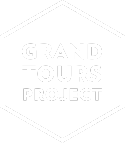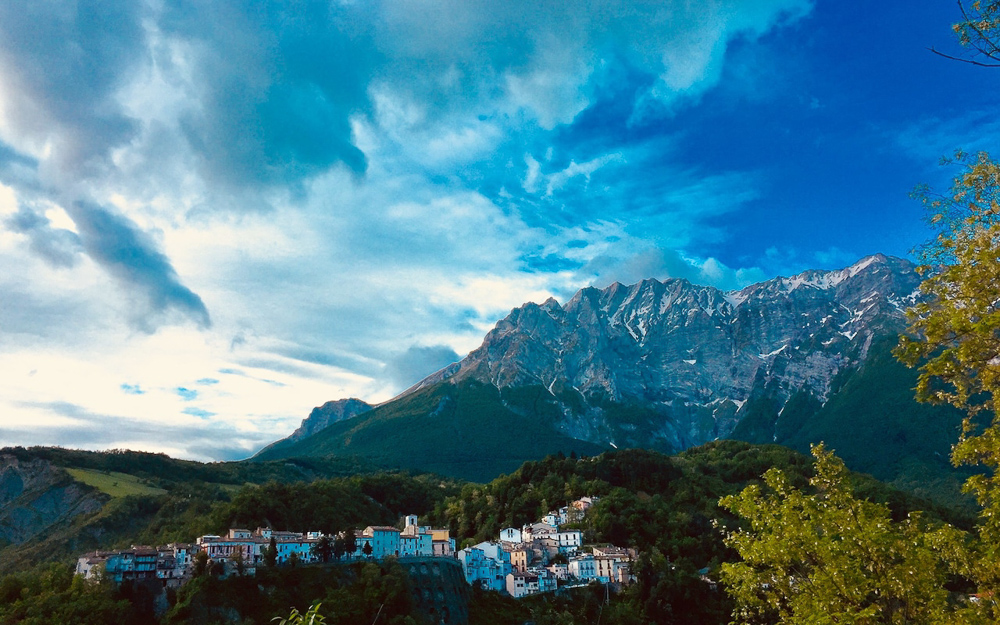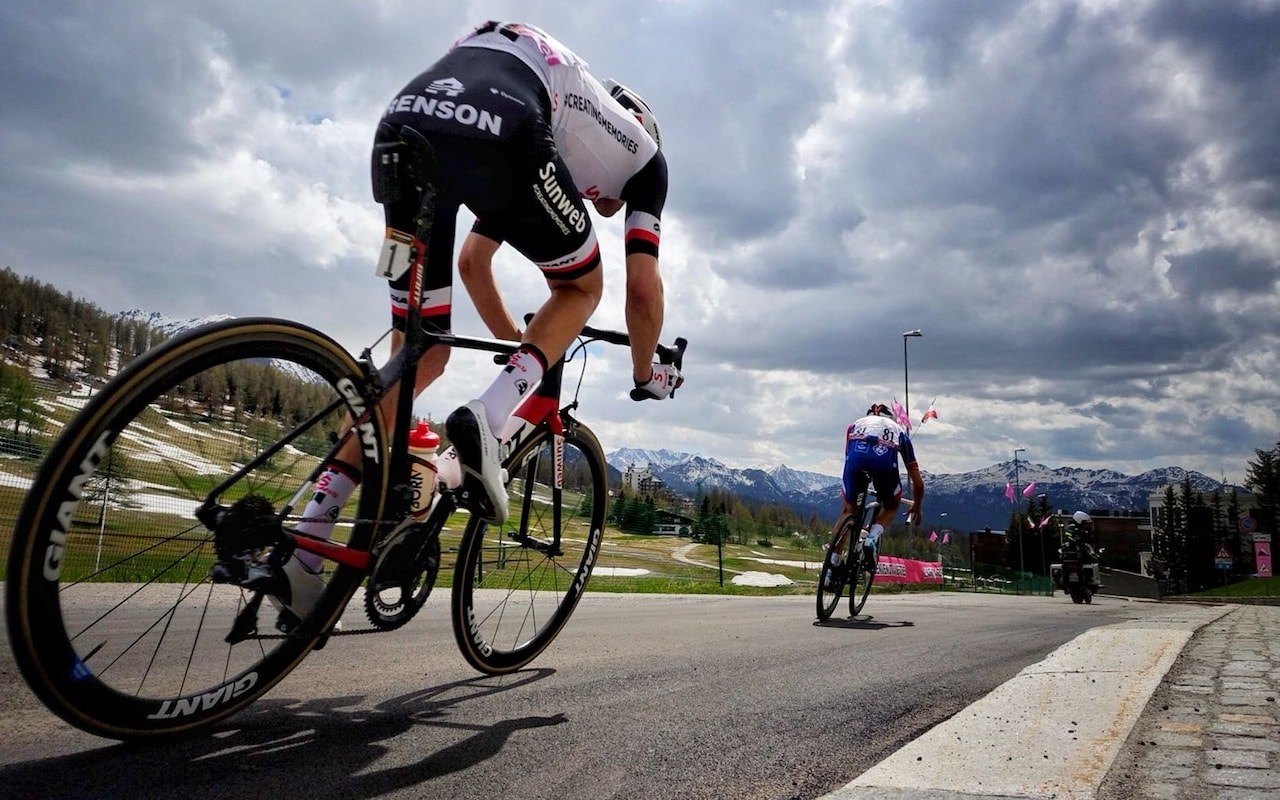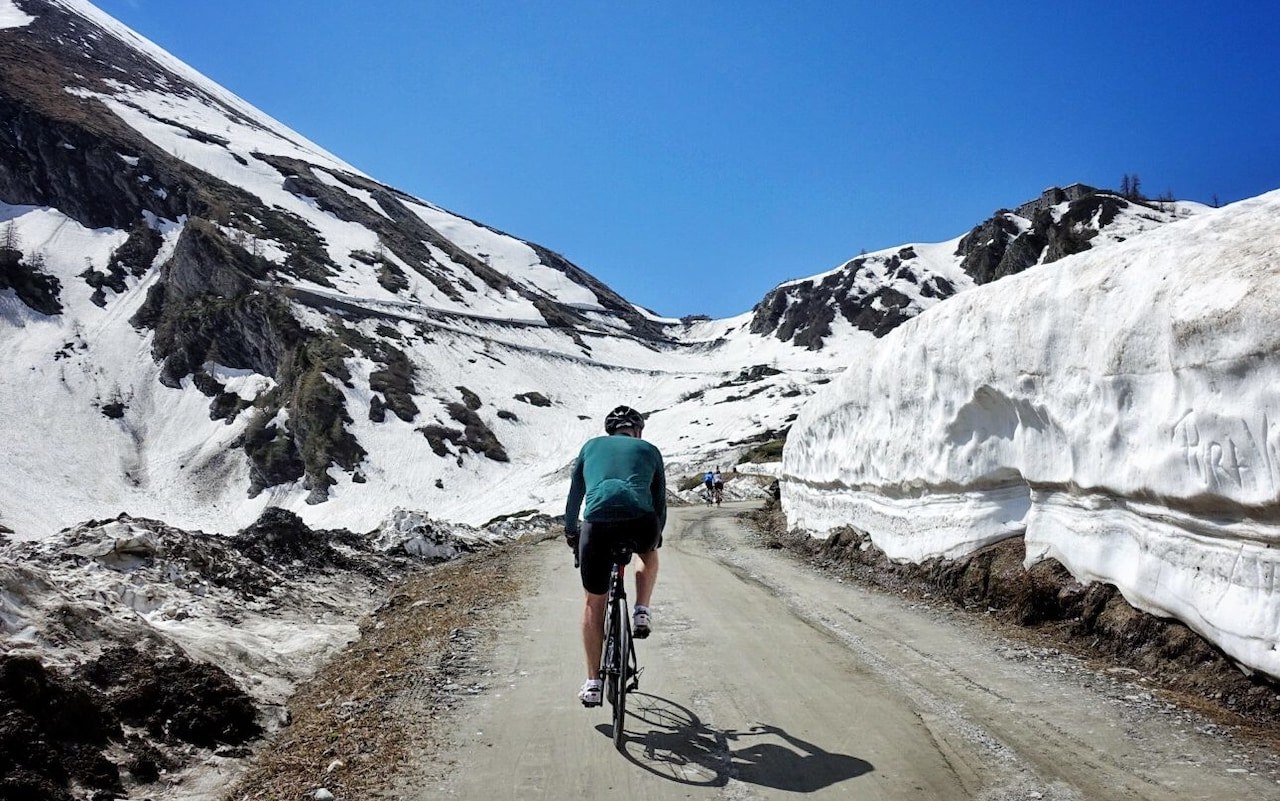
Ever wondered what it's like to ride a grand tour?
John MacLeary, The Telegraph
Oct / 26 / 2018
For as long as I can remember I have wanted to ride a grand tour – one of the three epic stage races that punctuate the cycling season. As a child when not fantasising about scoring the winner against Everton in the FA Cup final or bagging a hat-trick in the European Cup final, I dreamed not about winning a stage or jersey at the Giro d’Italia, Tour de France or Vuelta a España, but simply completing one of these three-week odysseys.
Even then I understood the magnitude of these races, they were and still remain the most brutal tests of endurance any sportsperson can undertake. They are really, really hard; the level of physical strength and mental fortitude needed to complete them is off the scale. I may have been young and carefree as a child, but I wasn’t stupid. I knew my limitations and, in reality, knew I stood a better chance of marmalising Franco Tancredi in Stadio Olimpico than ever riding down the Champs-Élysées alongside Laurent, Bernard, Greg et al so stuck to riding the Tuesday night 10, thank you very much. I wasn’t much good at that either, but that’s another story altogether.
Fast forward almost 35 years and I'm climbing, high into the Carnic Alps in north-eastern Italy. The noise is overwhelming, the barriered road all mine. Somewhere behind – I have no idea how close – are other riders, closing in as I inch ever higher towards the finish line. Calls of 'dai, dai' spill out from the heaving masses on the other side of the barriers. Others offer more familiar words of encouragement: 'allez, allez'. One man leans over the metal fencing – one of the many thousands gathered, waiting patiently, high near the summit of this cruel, cruel climb – face contorted, almost in tears and screams 'Marco Pantani, Marco Pantani'. I go down onto the drops before, exaggeratedly, moving the bike left to right – à la Il Pirata – before flashing the Pantani fan a smile; he returns the smile. I push on.
I soon cross the line and it is finally all over. The pain, the suffering and the noise ends almost immediately. Over the top and beyond the press pack huddled into their pen staring, collectively as one, into the television screen as the action continues to unfold further down the climb. I slowly descend down the other side towards the team buses. Like an apparition ghosting itself away into the mountain-top fog, I vanish. I’m gone – both physically and figuratively.
Around 20 minutes later a second rider, Chris Froome, crosses the line arms aloft in celebration after winning his first stage at the Giro d'Italia. The Team Sky rider is closely followed by the maglia rosa of Simon Yates to complete the British one-two-three of riders over summit of the behemoth that is Monte Zoncolan: MacLeary, Froome, Yates. It was a surreal but beautiful few moments in time that will never be forgotten; it was stage 14 of the 2018 edition of the Giro and I had just completed my fifth stage of the second week, riding each and every kilometre of the race (just) ahead of the professionals.
So, how did this happen? After becoming the first amateur to ride the Giro, Tour and Vuelta on the same day as the races themselves back in 2013, Keith Tuffley founded Grand Tours Project with the goal of helping others realise the dream of riding in the pedal strokes of their cycling heroes. Unsurprisingly, few attempt all three weeks of each race, though fortunately Grand Tours Project offer the opportunity to tackle just one week, or even abridged versions of stages for those wanting to experience the finale each day. No matter their ability, Keith and his Grand Tours Project team offer bespoke packages for keen amateurs who want to soak up the atmosphere of the starting and finishing lines, even the winners' podium if they so wish.
Once signed up for the second week of the Giro, which consisted of riding six back-to-back stages over a distance of 1,174 kilometres (729.5 miles) with 17,955 metres (58,907 feet) of vertical elevation, it was time to put some serious miles into the legs which was easier said than done given the weather we had in northern Europe in spring 2018. However, knowing I would be riding an average of almost 200km each day with some of the world's best cyclists breathing down my neck was a pretty good motivational tool.

Despite
having ridden similar, arguably tougher, courses while racing – I use
the term ‘racing’ extremely loosely – the Haute Route for the last five
years, I had no idea what the standard of rider would be once I joined
up with the Grand Tours Project team out in Italy. Having the experience
of competing over seven consecutive days at the Haute Route, though,
gave me the confidence I could complete the week.
The Haute Route, after all, is ‘the highest and toughest cyclosportive in the world' so how much harder could riding a week at the Giro be? The answer, as it turned out, was: quite significantly.
Unlike amateur events such as the Haute Route or L'Étape du Tour, riding with Grand Tours Project – whether that be for a few days, a week or the entire length of a grand tour – there is no race to the finish. No times are given out; no jerseys awarded at the end of each stage. However, given the nature of grand tours and the distance of each stage – often over 200km each day in the case of the Giro – it can feel like a race from the moment you wake up until your head finally hits a fresh new pillow in a new hotel, in a new town later that day. Often much, much later – almost 20 hours later on one occasion, though that was also down to me writing a nightly blog while my room-mate Simon got stuck into his well-earned sleep.
It was an early start for our five-man group, at the ungodly hour of 2.45am to be precise. Myself, Uri Martins, a former professional and our ride leader for the week, Simon Dennis, my Canadian room-mate and a keen triathlete, Gustavo Ribeiro, another former Haute Route rider from Brazil and his friend and compatriot and all-round cycling enthusiast Rodrigo Tassinari hit the road outside the small town of Penne, 130km east of Rome, just before daybreak at 4.40am.

Riding in the dark, especially up a testing climb in unfamiliar surroundings, can be a disconcerting experience, but the exhilaration of reaching the first of many summits crested during the week as the rising sun alerted the wider world a new day was dawning made the entrance price alone worth every penny.
As anybody who has ridden long distances will know it can become difficult cataloguing each and every high point, instead there are scores, if not hundreds, of little snapshots, moments of pure joy that live with you forever. As the week unfolded, as we weaved our way along the peaks of the Apennines before dropping town to skirt along the Adriatic coast on the road north towards the Alps, the beauty of the landscapes unfolded before us. Each day had its own personality, each its own tests.
Together, though, our group worked together. Each doing his turn on the front, pulling the rest along with the finishing line our goal. There was time, of course, for coffee and lunch stops. This after all was no race. Nicola, a friendly Sardinian who was on hand to take our jackets or gloves from the support vehicle that followed us while still riding helped save valuable time and made the week a relatively stress-free experience. The added bonus of having someone conjure up a lunch-time spread of local produce was a delight, too. There are only so many energy bars or gels one person can take – my record for the week was a gut-busting 10 Science in Sport Go Energy bars along with 10 of their gels. On top of a hearty breakfast, a decent picnic lunch and more pizza and pasta than is probably healthy each evening, I didn't so much ride around Italy, but eat my way through it.

Having followed cycling for many years – in both a professional capacity and as a fan – I thought I understood the travails riders faced during races. Riding the Haute Route may have taught me how to cope with the constant moving around from hotel to hotel and having to wake early before wolfing down another huge meal, but joining up with Grand Tours Project took it to another level.
Most of our days were spent in relative solitude, riding uninterrupted by the wider world. On a couple of occasions the tranquility was broken as we were swept up by the caravan – the convoy of publicity vehicles that precedes the race advertising anything from dog food through to mobile phones. Being overtaken by a motorised shed was a particular low point in my non-existent cycling career, but amusing nonetheless. Once we reached the finishing line, though, it was utter chaos, a complete assault on the senses. Police, race officials, team cars, terrible loud music and thousands of fans are, of course, all commonplace at bike races, but when riding into the maelstrom of noise from our relative world of peace and tranquility it can be quite the shock.
It was probably worth it all, though, if only to see the looks on the
faces of bemused fans wondering who on earth we were: were we a
breakaway group that had ghosted off the front of the peloton?

Finishing each stage exhausted but exhilarated, hungry and twice drenched following some horrific downpours – in Imola, on the race circuit where the Formula One driver Ayrton Senna lost his life, we had to contend with a terrifying lightning storm – it was time for quick change before watching the professionals cross the line. Stage wins for Matej Mohoric, Yates (two), Sam Bennett, Elia Viviani and Froome, all of whom finished in roughly half the time we took to complete each stage, put into stark focus, too, how difficult it must be to reach the highest level of this terribly cruel sport.
The standard in our small group was relatively good. I had never felt so strong going into the week and thanks to Pinarello who had loaned me a Dogma F10, I had one of the best bikes around, but we were no match for the peloton. Though we did manage to finish before them while avoiding the ignominy of being kicked off the course – even if only by 20 minutes atop Monte Zoncolan. While we were gibbering wrecks and shadows of the human beings that started each stage, these athletes looked relatively fresh and able to speak to the scrum of journalists waiting at the finishing line.
By the time we reached Venice having put 1,174km into the legs along with almost 18,000 metres of climbing any thoughts of post-ride beers were put very much on the back-burner. It was the most exhausting week of my life. It was brutal and beautiful, but life-affirming. Dreams, after all, can come true – even if only for a week.